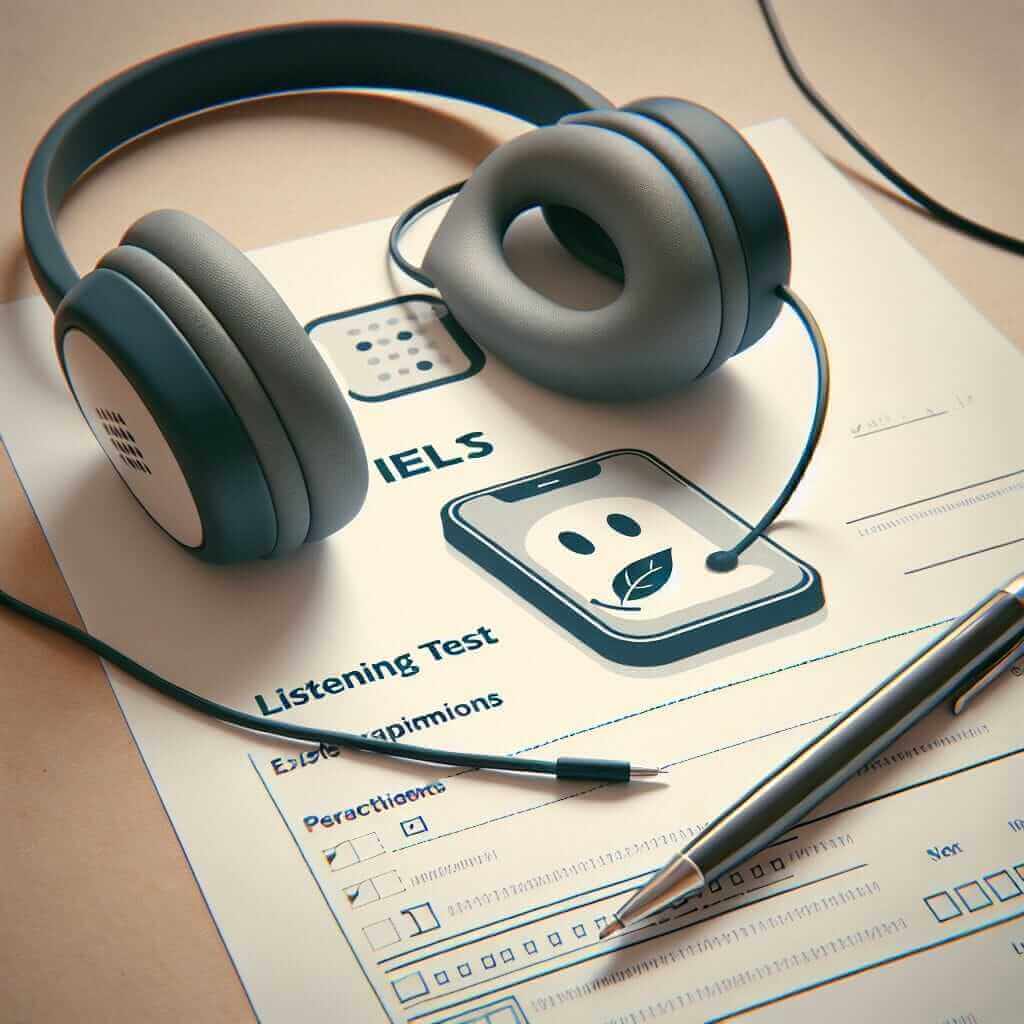The IELTS Listening test can feel like a whirlwind of accents and information. To succeed, you need to be familiar with the content and question types you’ll encounter. This comprehensive guide will break down the four IELTS listening sections, providing you with the knowledge and strategies to achieve your target band score.
Understanding the IELTS Listening Test Format
The IELTS Listening test is the same for both IELTS Academic and IELTS General Training. It is divided into four sections, each with 10 questions, making a total of 40 questions. You have 30 minutes to answer these questions, plus an additional 10 minutes to transfer your answers to the answer sheet.
Section 1: Social Interactions
Overview
This section typically involves a conversation between two people, often in a social setting. You might hear a conversation about booking a hotel room, inquiring about a course, or discussing travel plans.
Example Situation
Imagine you hear a conversation between a tourist and a hotel receptionist. The tourist wants to know about room availability, prices, and amenities. You then answer questions based on the information provided in the dialogue.
Question Types
Common question types in Section 1 include:
- Form completion: Fill in missing details on a form, such as a registration form or booking form.
- Note completion: Complete notes with specific information from the conversation.
- Multiple choice: Choose the correct answer from a list of options.
Section 2: Monologue or Social Context
Overview
Section 2 usually features a monologue or a conversation in a slightly more formal social context. You might hear a talk about local facilities, a guide describing a museum exhibition, or a presentation about a community project.
Example Situation
Picture listening to a museum guide explaining the history of a specific artifact. The guide might discuss its origins, significance, and interesting facts. You would then answer questions based on the guide’s explanation.
Question Types
This section commonly includes:
- Sentence completion: Complete sentences with words or phrases from the recording.
- Table completion: Fill in missing information in a table based on the listening material.
- Short-answer questions: Answer questions briefly using information from the audio.
Section 3: Educational or Training Context
Overview
Section 3 focuses on conversations or discussions in an educational or training setting. You might encounter a conversation between students discussing an assignment, a tutor providing feedback on a project, or a lecture excerpt on a specific academic topic.
Example Situation
Imagine listening to a conversation between a tutor and a student about an upcoming presentation. The tutor might offer suggestions for improvement, and the student might ask for clarification on certain points. You would then answer questions based on their discussion.
Question Types
This section often includes:
- Matching: Match statements to corresponding options based on the information provided.
- Diagram labeling: Label parts of a diagram based on the description given.
- Multiple choice: Choose the correct answer from a list of options, often requiring a deeper understanding of the audio.
Section 4: Academic Lecture or Presentation
Overview
Section 4 presents a monologue in the form of an academic lecture or presentation. You might hear a lecture on a scientific discovery, a historical event, or a discussion about an environmental issue.
Example Situation
Visualize listening to a lecture about the impact of climate change on a specific region. The speaker might discuss the environmental consequences, social implications, and potential solutions. You would then answer questions based on the information presented in the lecture.

Question Types
This section typically includes:
- Note completion: Complete notes, often in a summarized format, based on the lecture content.
- Summary completion: Fill in the gaps in a summary paragraph with appropriate words or phrases.
- Multiple choice: Choose the correct answer from a list of options, often requiring a comprehensive understanding of the lecture.
Common Mistakes to Avoid
- Losing focus: The audio is played only once. Stay attentive throughout the recording, even if you miss an answer.
- Ignoring instructions: Pay close attention to the word limit and question types.
- Misinterpreting information: Don’t jump to conclusions. Listen carefully for specific details and context.
- Poor spelling and grammar: Ensure your answers are grammatically correct and spelled correctly.
Effective IELTS Listening Practice Strategies
- Listen actively: Focus on understanding the main ideas, key details, and speaker’s tone.
- Practice with various accents: Familiarize yourself with different English accents to avoid being caught off guard.
- Develop note-taking skills: Practice taking concise and effective notes while listening.
- Use practice tests: Familiarize yourself with the test format, timing, and question types.
Conclusion
Mastering the IELTS Listening test requires consistent practice and a strategic approach. By understanding the structure of each section, familiarizing yourself with common question types, and utilizing effective practice strategies, you can confidently approach the exam and achieve your desired band score. Remember, the key is to listen attentively, stay focused, and trust in your preparation.